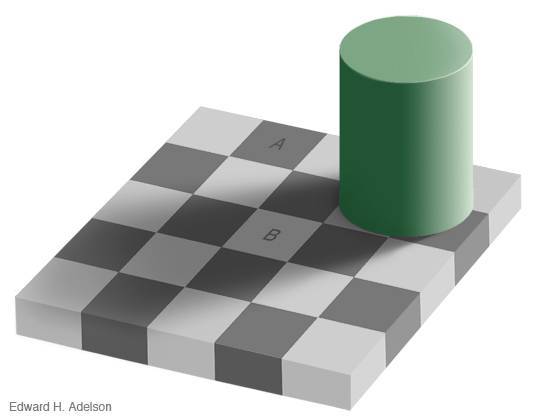Ruth Rosenholtz
Measuring Visual Clutter
Why Measure Clutter?
Visual clutter can interfere with searching for a threat in a baggage x-ray, or a document on your real or virtual desktop. Driving performance is degraded in the presence of “road clutter,” and clutter can interfere with information gathering and decision making in complex information visualizations such as maps and web pages.
A reliable measure of clutter might help inform designers, or help optimize visual clutter in situations in which there can be no human designer in the loop, e.g. when displays change dynamically. In situations in which one has minimal control over the level of clutter, e.g. for road clutter or clutter in baggage x-rays, a measure of visual clutter might allow for system alerts to signal that performance might be impaired.
Furthermore, a measure of visual clutter should also be useful to the human vision community, by helping us to generalize models of visual search to images such as natural scenes. A measure of visual clutter might replace the notion of “set size”, i.e. the number of objects in the scene, as this is difficult to measure for natural scenes.
Measures of Visual Clutter: Some Intuitions
We have developed and tested two measures of visual clutter: the Feature Congestion measure, and the Subband Entropy measure.
Feature Congestion measure: This measure of visual clutter is based on the common experience of going to put a note on a colleague’s desk. If the desk is uncluttered, it’s easy to find a place to put the note where we are confident our colleague will notice it. However, if the desk is cluttered, we tend not to be confident they will notice the note, and perhaps will leave the note on a chair so they will spot it.
This suggests that clutter is related to the difficulty in adding an attention-grabbing item to a display. Visual search models typically attempt to predict the difficulty of searching for a particular target among particular distractors. However, our Statistical Saliency Model can easily make the dual prediction of how difficult it would be to add an attention-grabbing item to a display, and what features that item should have in order to draw attention. Our Feature Congestion measure of visual clutter is based upon this model of visual search.
Subband Entropy measure: This measure of visual clutter is based upon the intuition that a scene or display is less cluttered the more “organized” it is, i.e. the more items “group” together perceptually, whether through use of similar colors, or alignment, or other tricks. A related question to ask is to what extent each part of the display or scene is predictable from the rest of the scene? How redundant is the visual information in the scene?
With more organization, and thus more redundancy, the brain (or a computer) can represent an image with a more efficient encoding, which maintaining image quality. This suggests that the more cluttered an image, the more bits it should take to encode that image with something like JPEG2000. In fact, the Subband Entropy measure developed out of our observation that JPEG compressed file size was highly correlated with the Feature Congestion measure described above.
The Subband Entropy measure of visual clutter is based upon these observations and intuitions. It decomposes an image into wavelet subbands, much like the decomposition early in the visual system. It then computes the entropy in each subband, and combines these to get total clutter for a given image or display.
More details and testing of these measures of visual clutter: For more details on these measures of visual clutter, as well as results of using these measures to predict the difficulty of searching within a display, see our papers.
Do measures of visual clutter aid designers? See discussion of our recent field study.
Bibliography
- R. Rosenholtz, Y. Li, & L. Nakano, “Measuring visual clutter. “Journal of Vision, 7(2):17, 1-22, 2007. doi:10.1167/7.2.17.
- R. Rosenholtz, Y. Li, J. Mansfield, Z. Jin, “Feature Congestion: a measure of display clutter.” SIGCHI 2005, 761-770, 2005.
Software
- How cluttered is my display? MATLAB code for generating color and contrast “clutter maps”.
